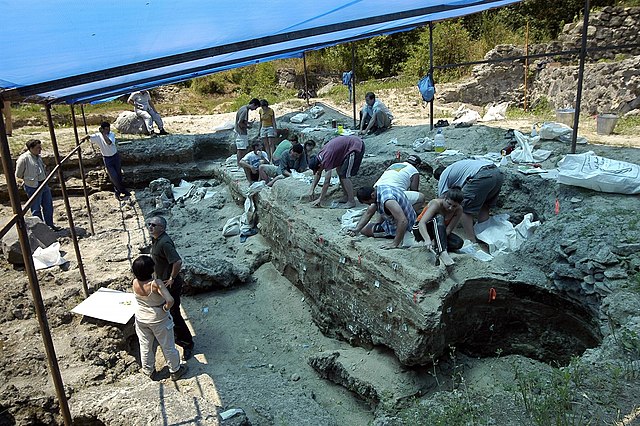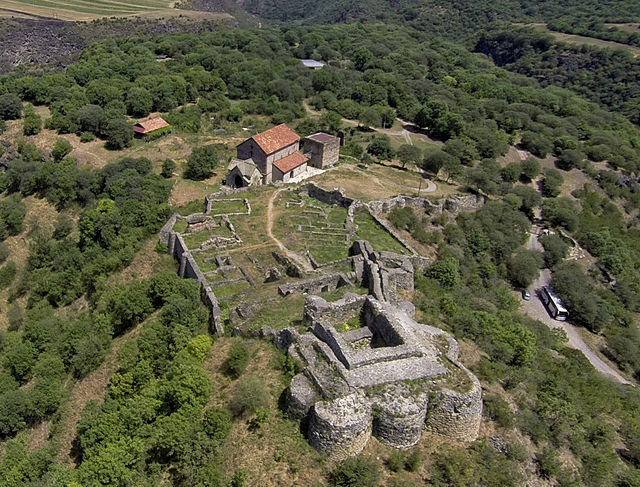The Dmanisi hominins, Dmanisi people, or Dmanisi man were a population of Early Pleistocene hominins whose fossils have been recovered at Dmanisi, Georgia. The fossils and stone tools recovered at Dmanisi range in age from 1.85 to 1.77 million years old, making the Dmanisi hominins the earliest well-dated hominin fossils in Eurasia and the best preserved fossils of early Homo from a single site so early in time, though earlier fossils and artifacts have been found in Asia. Though their precise classification is controversial and disputed, the Dmanisi fossils are highly significant within research on early hominin migrations out of Africa. The Dmanisi hominins are known from over a hundred postcranial fossils and five famous well-preserved skulls, referred to as Dmanisi Skulls 1–5.
Replica of Dmanisi Skull 3, the skull of an adolescent individual, discovered in 2001
Excavation site at Dmanisi in 2007
Georgian archaeologist and anthropologist David Lordkipanidze (left) showing a hominin jaw discovered at Dmanisi to American ambassador John R. Bass in 2010
Dmanisi Skull 5 (D4500) at the time of discovery in 2005
The Dmanisi historic site is a historic and archaeological site in Georgia, located north of the village of Patara Dmanisi, Dmanisi Municipality, in south-central region of Kvemo Kartli, some 85 km southwest of Tbilisi, Georgia's capital.
Ruins of medieval Dmanisi.
Sioni cathedral at Dmanisi.
Ruins of the town walls.
Church of St. Marina.








